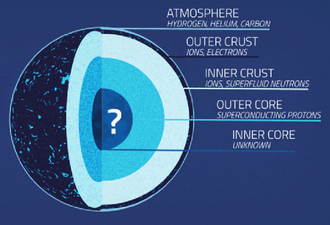
Neutron stars are superfluid. This is good news for theoretical physicists: they have an excuse to put together superfluid hydrodynamics and general relativity! However, it is bad news for astronomers, because the path between “building a hydrodynamic theory” and “being able to use it” is long. In relativity, one needs to make sure that signals do not travel faster than light. If this principle is violated, the initial value problem is pathological. You have nice equations, but you cannot solve them!
Till now, a reliable relativistic theory for neutron star hydrodynamics was missing. It was not clear how to combine superfluidity with dissipation. The relativistic theory for superfluidity is due to Carter, while the relativistic theory for dissipation is due to Israel and Stewart. How to merge the two formalisms consistently has been an open problem for decades: they do not seem to have anything in common. In a recent paper: “Extending Israel and Stewart hydrodynamics to relativistic superfluids via Carter’s multifluid approach” by L. Gavassino, M. Antonelli and B. Haskell from the Copernicus Astronomical Center in Warsaw, this apparent inconsistency has been solved.
The starting observation was that Carter’s theory can be constructed using an arbitrary number of currents (particles, quasiparticles, different chemical species,...). Let us call “Carter(N)” a theory with N currents. Then, Gavassino et al. showed that, close to local thermodynamic equilibrium, Carter(N+1) = Carter(N) + Israel-Stewart dissipation.
Adding one current to Carter’s theory, and then expanding for small deviations from equilibrium, produces viscous effects which are mathematically equivalent to those of Israel-Stewart’s theory. On the other hand, it is easy to derive the conditions under which Carter(N+1) is causal. Hence, the equations can be solved!
Do you want to include dissipation in a superfluid theory? Just add one more current! Which current? That depends on microphysics... phonons, rotons, photons, or something else. In a neutron star crust, the additional current should be the non-superfluid baryons. Interestingly enough, in some models, this current was already there. People were already using a fully consistent superfluid-viscous theory, but nobody realized it!
Picture: the structure of the neutron star.
Text: Lorenzo Gavassino






